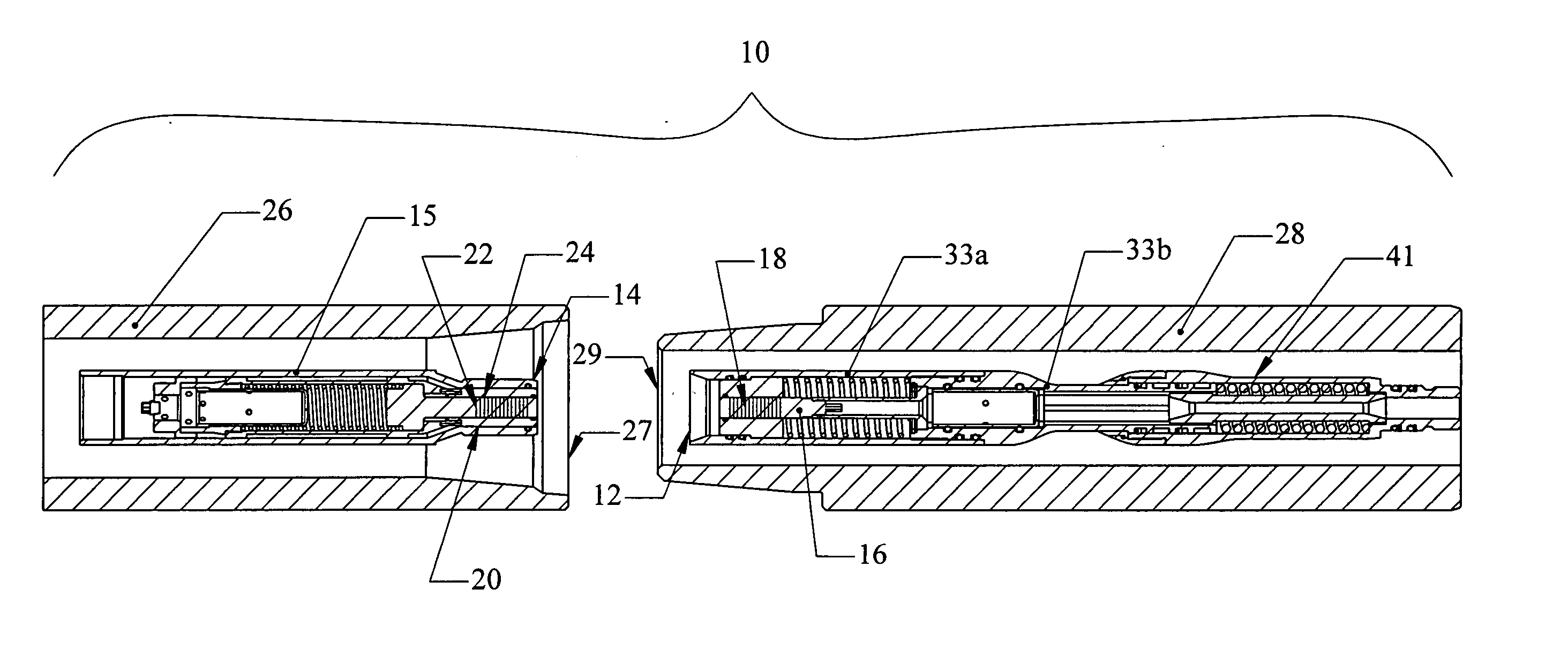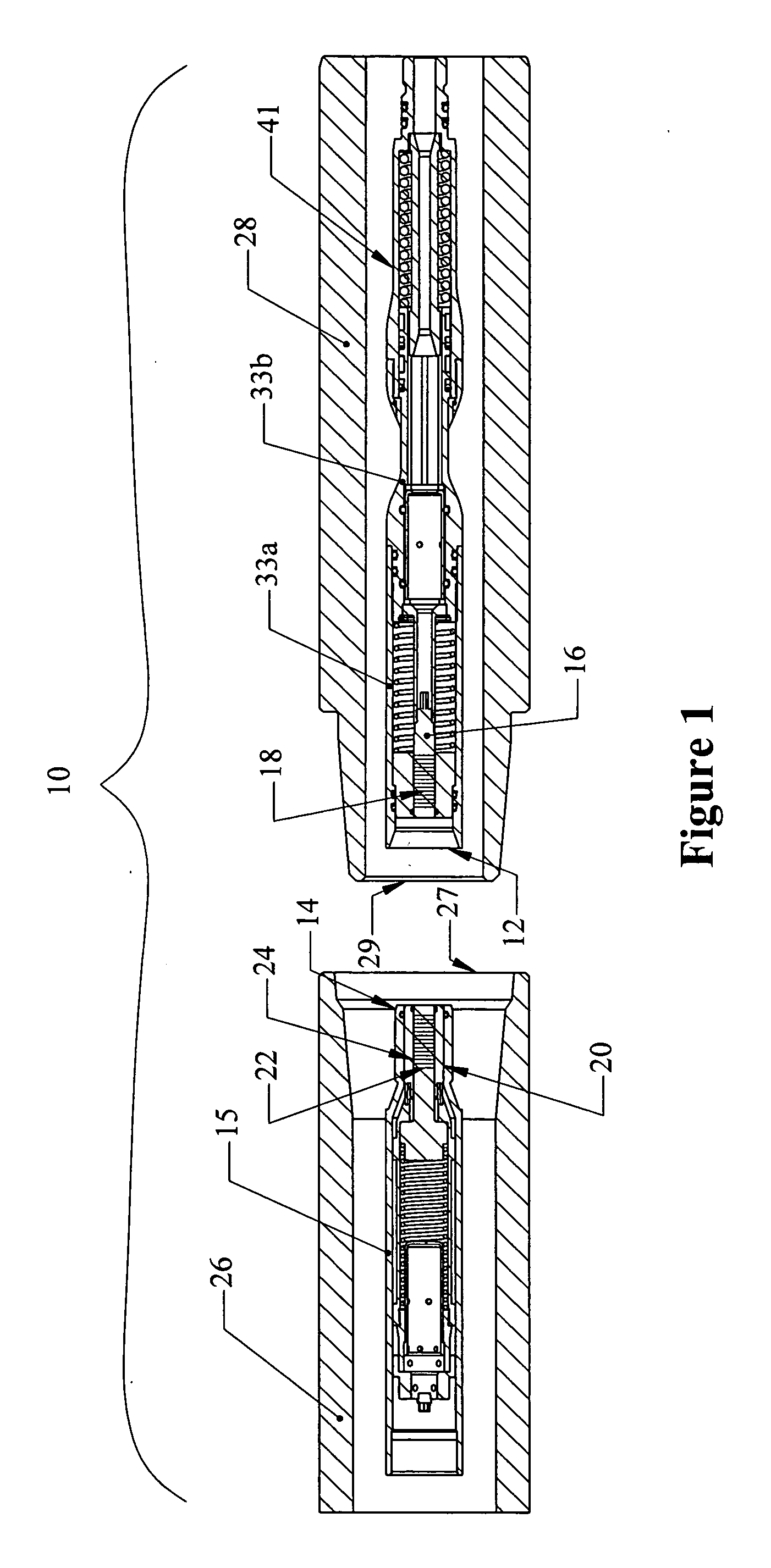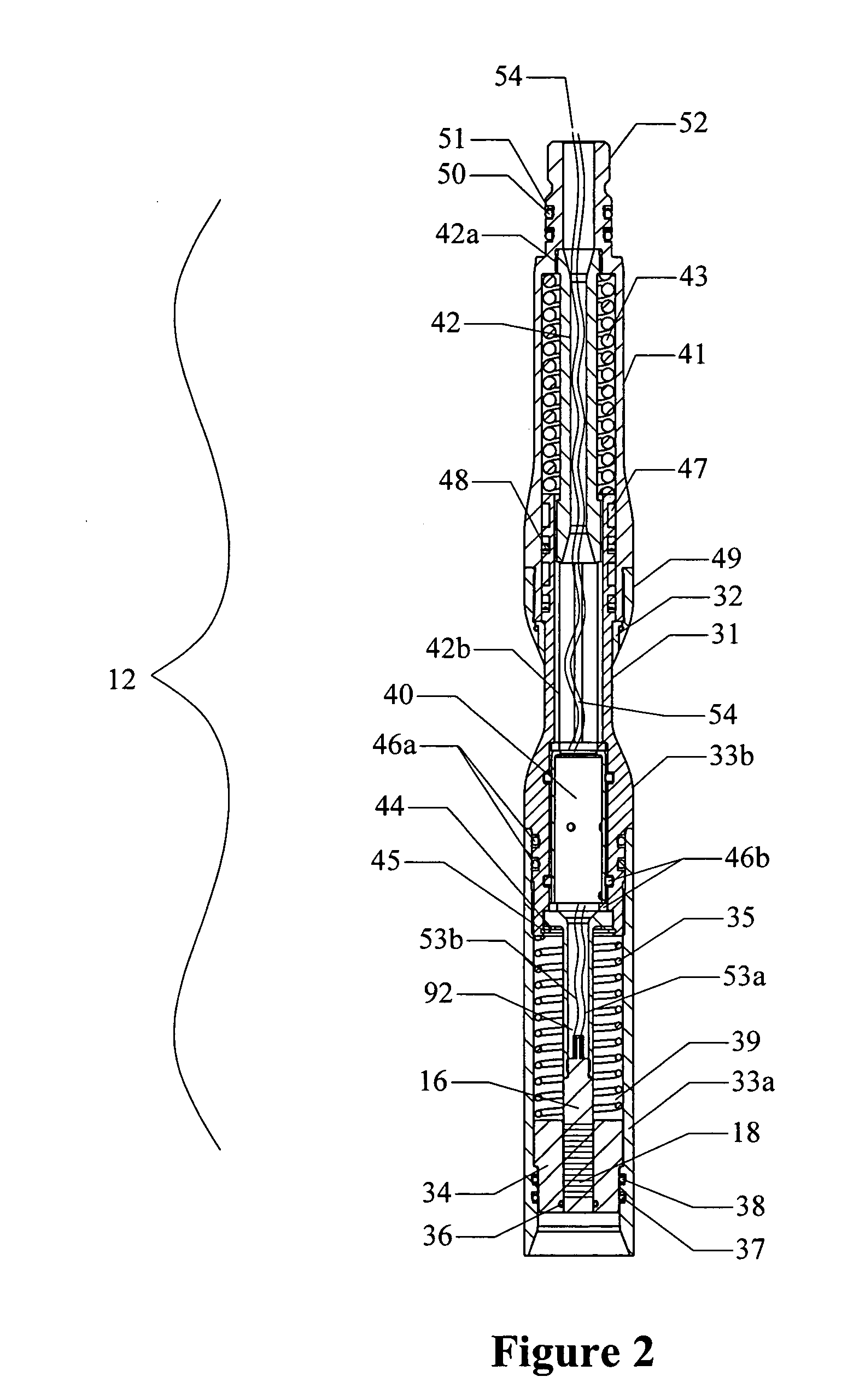Harsh environment rotatable connector
a technology of rotatable connectors and hazardous environments, which is applied in the direction of flexible/turnable line connectors, coupling device connections, drilling pipes, etc., can solve the problems of increased cost, increased risk of recutting of mating threads, and increased risk of electrical circuit damag
- Summary
- Abstract
- Description
- Claims
- Application Information
AI Technical Summary
Benefits of technology
Problems solved by technology
Method used
Image
Examples
embodiment 1
FIG. 11 denotes an arrangement where active powered electronic circuits are incorporated only on the plug side, and electronic access to the plug side circuits does not require socket side isolation circuitry, the socket side being essentially passive. For illustrative purposes we set the power line +V at 15 volts, resistor R1272 is 50,000 ohms and resistor R2278 is 100,000 ohms.
As may be seen with reference to FIG. 11, the determination of the full engagement of plug 212 and socket 216 (whereby electronic circuitry which requires isolation occurs on the plug side) is achieved as follows. Current from supply line 235 flows through resistor R1 (272), through forward-biased diode 274 and is blocked from the plug sensor circuit output by diode 276. A current pathway is available across the plug / socket junctions 284 and 288, through diode 302 that now acts as a sensor diode, back through plug / socket junctions 290 and 286, and finally through resistor R2 (278) to Ground 250. The potent...
embodiment 2
The complementary circuit of Embodiment 1 is depicted in FIG. 12 and denotes an arrangement where active powered electronic circuits are incorporated only on the socket side, and furthermore that electronic access to the socket side circuits does not require plug side isolation circuitry because the plug side is essentially passive. For illustrative purposes we set the power line +V at 15 volts, resistor R1 (298) is 50,000 ohms and resistor R2 (304) is 100,000 ohms.
As may be seen with reference to FIG. 12, the determination of the full engagement of plug 212 and socket 216 (whereby electronic circuitry which requires isolation occurs on the plug side) is achieved as follows. Current from supply line 236 flows through resistor R1 (298), through forward-biased diode 300 and is blocked from the plug sensor circuit output by diode 302. A current pathway is available across the plug / socket junctions 290 and 286, through diode 276 that now acts as a sensor activation element by passing...
embodiment 3
The discussion of Embodiment 1 and Embodiment 2 above now makes the understanding of Embodiment 3 as exemplified by FIG. 9 straightforward. Both plug sensor circuit 256 and socket sensor circuits 257 are powered independently by +V(plug) 235 and +V(socket) 236. The voltage potential at Sensor Circuit 256 (plug) output is available in either of two routes: a) current from line 235 via resistor R1 (272) and diode 274 passes along sensor line 1 (280) to contacts 284 and 288, then via sensor line 2 (294) through diode 302, Sensor Line 1 (292), contacts 290 and 286; or b) current from line 236 through resistor R1 (298) and diode 300, along Sensor Line 1 (292), through from contacts 290 and 286 to sensor line (282).
The choice of routes a) or b) is determined solely by whether +V(plug) 235 is greater than +V(socket) 236 by more than one diode drop (typically 0.6V). In either case the significant issue is that the plug Sensor Circuit 256 is activated by an adequate +V(socket) 235 poten...
PUM
 Login to View More
Login to View More Abstract
Description
Claims
Application Information
 Login to View More
Login to View More - R&D
- Intellectual Property
- Life Sciences
- Materials
- Tech Scout
- Unparalleled Data Quality
- Higher Quality Content
- 60% Fewer Hallucinations
Browse by: Latest US Patents, China's latest patents, Technical Efficacy Thesaurus, Application Domain, Technology Topic, Popular Technical Reports.
© 2025 PatSnap. All rights reserved.Legal|Privacy policy|Modern Slavery Act Transparency Statement|Sitemap|About US| Contact US: help@patsnap.com



